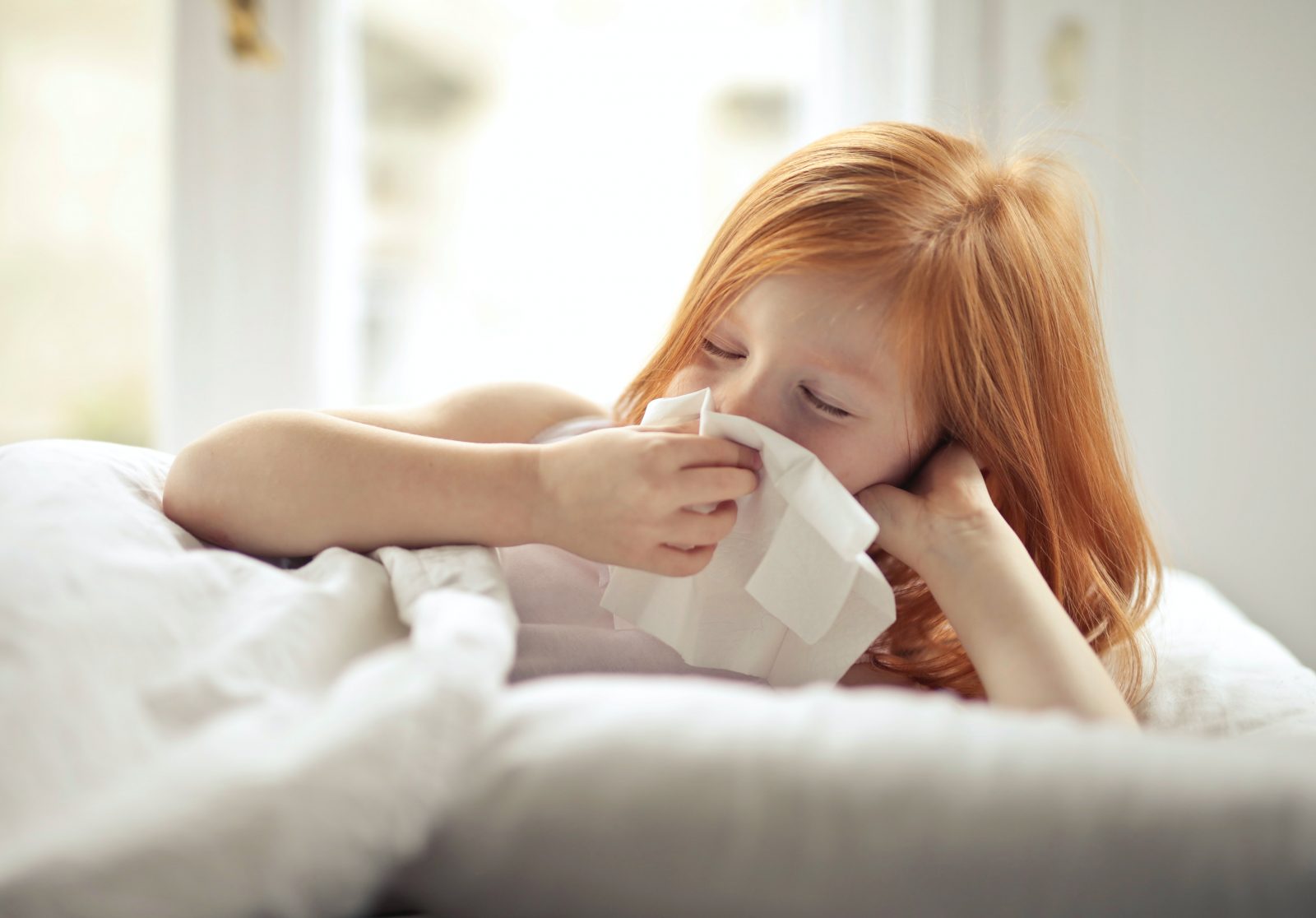The Most Common Childhood Illnesses

by Anna Cannon
Between school, daycare, playing outside and all the other fun things about childhood, kids are bound to get sick now and then. Most childhood illnesses are nothing to worry about, but it comes down to parental instinct–if you think your child is really sick, always take them to the doctor. Here are some common childhood illnesses and how to treat them.
Colds
Colds are one of the most common childhood illnesses out there and don’t usually require medical attention. Treatment options are limited for children under four, who shouldn’t take decongestants and antihistamines without consulting a doctor. Children of any age can take recommended doses of over-the-counter pain medications, and treatments like nasal washes and humidifiers can help relieve congestion. However, never give your child aspirin; it has been linked to Reye syndrome, which can lead to seizures, coma and even death.
Flu
Flu can sometimes seem like a common cold at first, but the main thing that sets it apart is high fever, headache and body aches. Unlike adults, children can have stomach pain, nausea and vomiting, which could be mistaken for a stomach bug. There’s no cure, but drugs like Tamiflu can help, and the CDC recommends that all children older than six months get their yearly flu shot.
Chickenpox
Chickenpox has become less common since the vaccine was invented, but there’s no cure. Antiviral drugs can lessen symptoms, but patients just have to let the virus run its course. Chickenpox is known for the itchy red sores it causes, but this is preceded by several days of headache, fever and poor appetite. This is also when it’s most contagious, and it is contagious until all the sores have scabbed over.
Glue Ear
Glue ear occurs when inner ear fluid builds up after repeated infections and becomes tacky, which impairs hearing. This condition is the main reason children have to get surgically implanted ear tubes, which help drain the ear and can prevent hearing loss. Glue ear will usually resolve itself in about three months, though treatment is recommended if your child has Down syndrome or is experiencing severe hearing loss.
Hand-Foot-Mouth Disease
Hand-Foot-Mouth disease is characterized by small, sometimes painful sores on the (you guessed it) hands, feet and mouth, and sometimes the buttocks and legs. The disease begins with fever and sore throat, and sores usually show up after 3-6 days. This isn’t a serious disease, and doesn’t usually require a doctor visit. It can be treated with cool liquids to drink and pain relievers, and it usually goes away within a week.
Pinkeye
Pinkeye (conjunctivitis) is inflammation of the membrane that covers the white part of the eye and the inner eyelid, and can be caused by bacterial infection or allergies. Bacterial conjunctivitis is very contagious, but allergic conjunctivitis isn’t. If you think your child has pinkeye, take them to the pediatrician. Most cases aren’t serious, but some serious infections look like pinkeye and can cause damage.
RSV
Respiratory syncytial virus (RSV) is a lot like a cold, but it causes mucus to build up in the child’s chest and makes breathing more difficult. It’s not dangerous for healthy kids, but it can be dangerous for infants since their chest walls aren’t strong enough to let them cough up mucus. RSV can be treated like a cold, but you need to call a doctor if your child is wheezing or has a high fever, bad cough or grayish-blue skin color.
Croup
Croup refers to a number of viruses that cause a distinctive “barking” cough and a high-pitched, squeaking noise (called stridor) when breathing in. Most cases aren’t serious and can be treated with cool-mist humidifiers, approved pain relievers and plenty of fluids to prevent dehydration. You should go to the doctor if your child has difficulty breathing, a bluish tint to their lips from lack of oxygen, worsening stridor, dehydration or severe fatigue.
Whooping Cough
Whooping cough (pertussis) is less common now thanks to vaccines, but vaccinated children can occasionally get it. Children have violent coughing fits that leave them so out of breath that they inhale with a “whoop” sound. Pertussis is sometimes called the “100 days cough” because it takes so long to recover. If you think your child has pertussis, seek medical attention, especially if they are young or haven’t been vaccinated.
Ear Infections
Ear infections are common in children because the tubes in their ears are smaller than adults, which allows bacteria to grow. Many infections heal without medication, so a trip to the doctor isn’t necessary unless the infection is severe. Infants who nurse while lying down with a bottle are at risk because milk can get trapped in their Eustachian tubes, which connect to the back of the throat. Children exposed to secondhand smoke or poor hygiene practices are especially susceptible as well.









